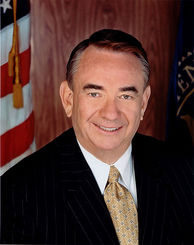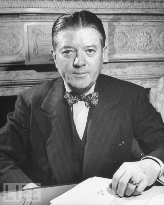Look to Senate Race, Not Walker Recall for Romney vs Obama Tilt in Wisconsin
The Badger State has voted for the same party in presidential and U.S. Senate races in 14 of 16 cycles over the last century

For while the Badger State has trended Democratic in recent presidential cycles, the vast majority of contests have been very competitively decided.
The state is currently immersed in the recall election of Republican Governor Scott Walker, but the outcome of that race on June 5th will likely be less of a barometer of what will happen at the top of the ticket in the presidential race this November than the trajectory of the state’s U.S. Senate race.
A Smart Politics review of Wisconsin election data finds that Badger State residents have voted for the same political party in presidential and U.S. Senate races in 14 of 16 cycles since the introduction of direct vote contests for senator nearly 100 years ago.
Of course, it is usually the top of the ticket contest that influences races races down the ballot, not vice versa, but with Wisconsin’s history of extremely competitive presidential elections, the Romney vs. Obama battle may go down to the wire in a toss-up. (Obama has enjoyed a single-digit lead in most matchup polls over the last couple months).
As such, looking at the state’s 2012 U.S. Senate race to replace the retiring Herb Kohl may just give an indication of where the presidential race will ultimately end up in Wisconsin.
The candidates on the Republican side will not be solidified until after a contested primary in mid-August, although former four-term GOP governor Tommy Thompson is the current favorite to take on Democratic U.S. Representative Tammy Baldwin.
Thompson has been leading Baldwin in the polls for most of the year.
If Thompson (or whoever emerges as the Republican nominee) should win the seat in November and the state votes once again to reelect President Obama, it would be just the third time Wisconsinites would split their ticket for these two federal offices over the past century.
The first time voters split their vote for president and senator was in the Election of 1940, when Wisconsin helped send Franklin Roosevelt back to the White House for a third term with a narrow 1.8-point win over Republican Wendell Willkie.

Twenty-eight years later, the state was divided for the second and last time at the ballot box for these two federal races.
A plurality of Wisconsin voters helped send Richard Nixon to the White House that fall, by 3.6 points over Democrat Hubert Humphrey.
Meanwhile, voters reelected Democrat Gaylord Nelson to a second term in the U.S. Senate by 23.4 points over Republican Jerris Leonard.
During the next six cycles the two offices appeared on the ballot in the state, Wisconsinites voted Democratic for both offices five times (1976, 1988, 1992, 2000, and 2004) and Republican for both offices once (in 1980, with Ronald Reagan and Robert Kasten in two tight races).
The state also voted Republican for both offices in 1916, 1920, 1928, 1944, 1952, and 1956 and Democratic for both in 1932 and 1964.
So what can we learn from the June 5th gubernatorial recall election as it pertains to Obama’s reelection chances in 5+ months?
While the Badger State has not had a race for governor in a presidential cycle since 1964, prior to that period the state frequently split its vote for these two races at the top of the ballot during the period under analysis.
During the 14 election cycles from 1912 to 1964, Wisconsinites voted for the same political party in the presidential and gubernatorial races seven times (1916, 1920, 1928, 1932, 1944, 1952, 1956) and split their ticket another seven times (1912, 1924, 1936, 1940, 1948, 1960, 1964).
As for any potential advantage Mitt Romney might have in picking off this battleground state with Scott Walker in office at the time of the general election, a previous Smart Politics report demonstrated there is no correlation between a state’s vote for president and the party of the sitting governor:
A Smart Politics analysis of 550 statewide presidential election results dating back to 1968 finds there to be no correlation between states won by Democratic and Republican presidential nominees and the partisan control of the governor’s mansion.
Democratic presidential candidates have won virtually an identical percentage of states in which they have held control of the governor’s mansion (33.8 percent) as those in which Republicans had control (32.3 percent).
Likewise, success for Republican nominees has been essentially the same in states with GOP governors (67.3 percent) as those with Democratic governors (65.2 percent).
The same also holds true for Wisconsin in particular.
The state has actually voted into office more presidents from the opposing party of the sitting governor (six) than the same party (five) since 1968.
Follow Smart Politics on Twitter.
